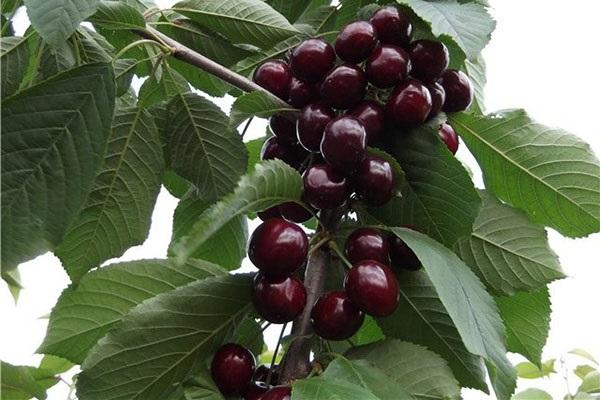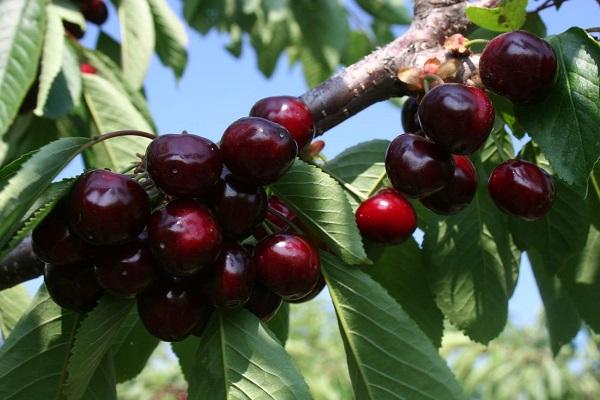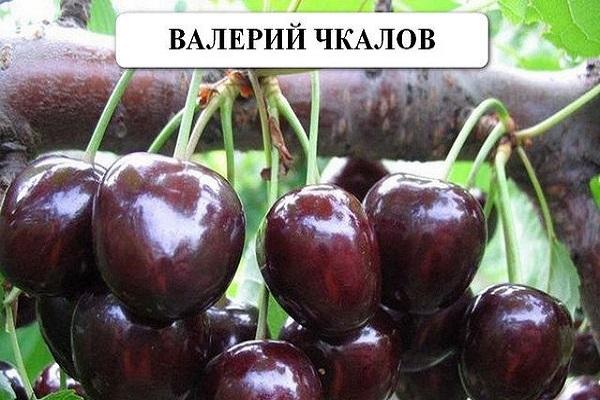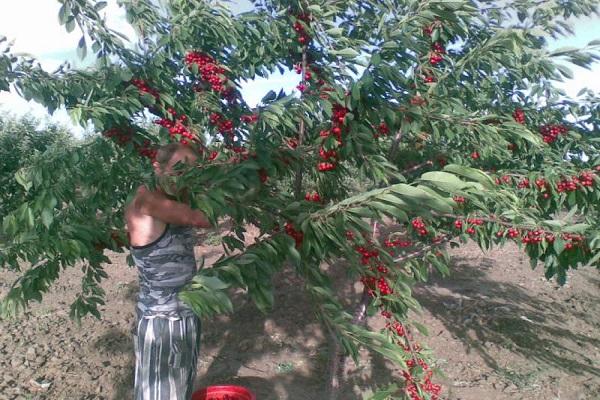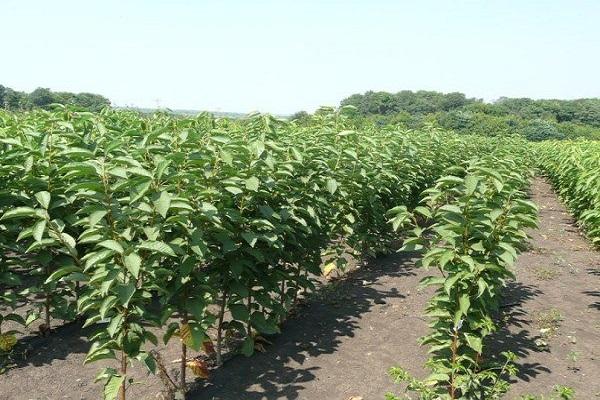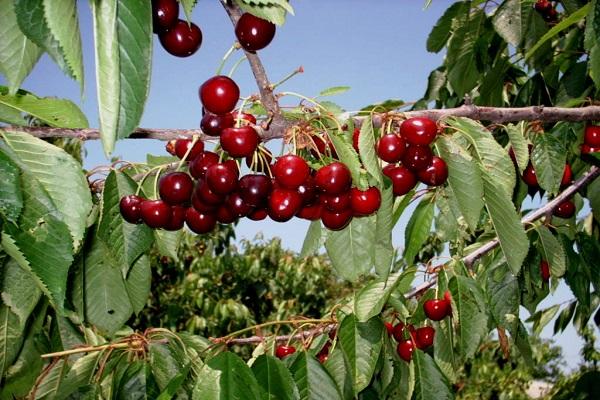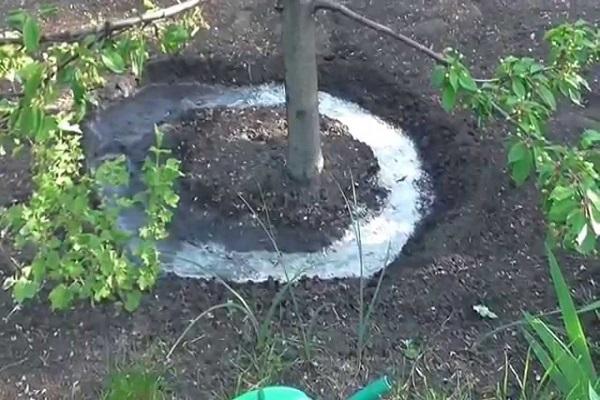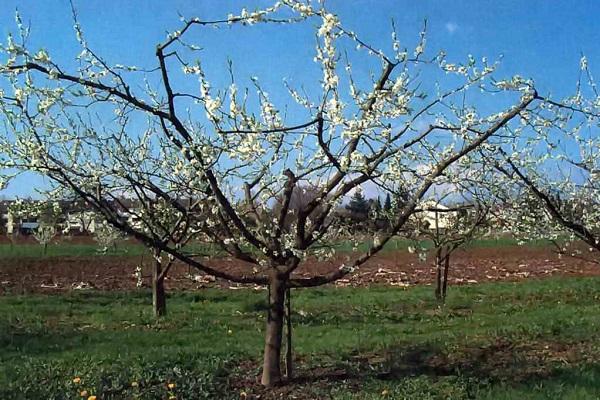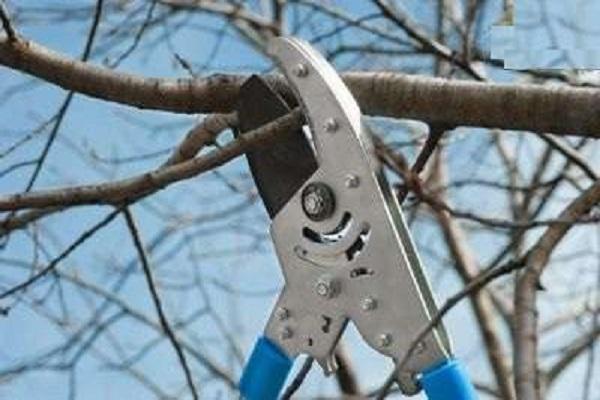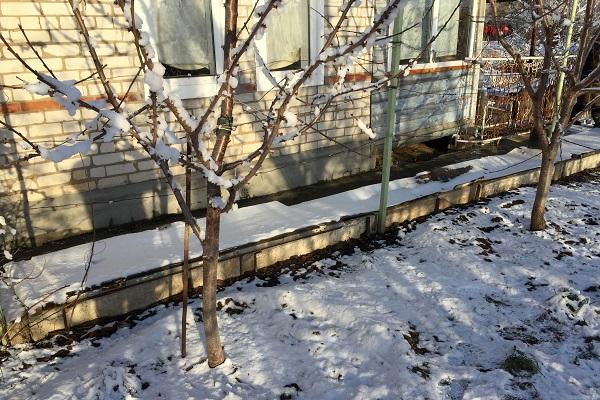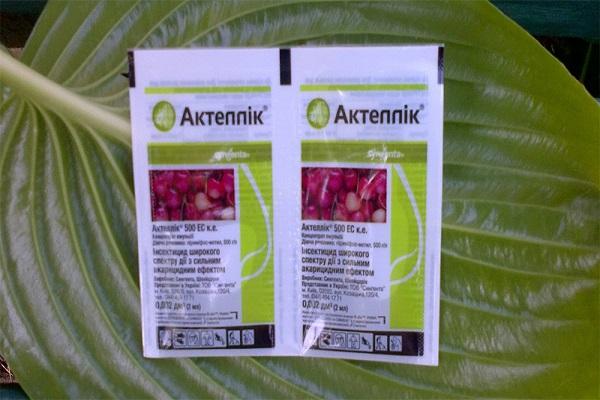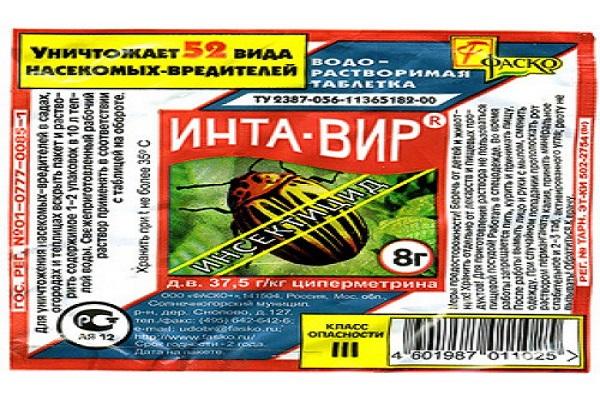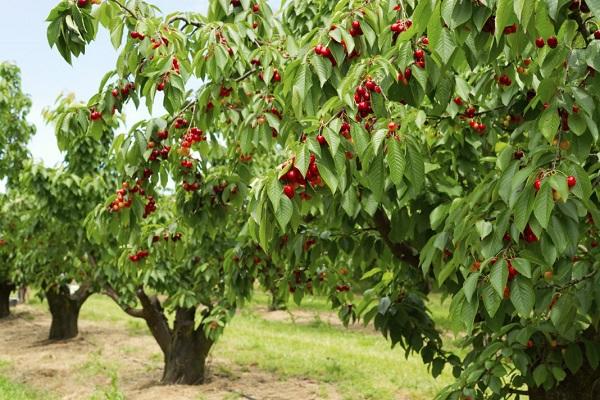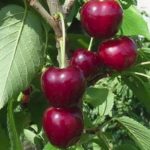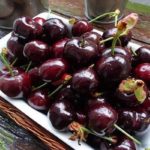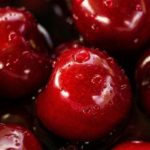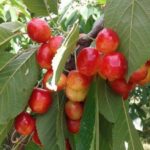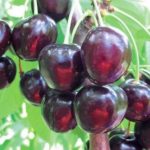Many people love sweet and aromatic cherries. These bright berries not only taste good, but are also good for health. They have a positive effect on the functioning of the cardiovascular system. Cherries contain a large amount of useful organic acids, a sufficient amount of fiber and sugar, ascorbic acid, therefore they are a healthy product. Among all types, the cherry variety Valery Chkalov stands out, which has remarkable properties.
- Description and characteristics of cherries by Valery Chkalov
- History of creation
- What are the pros and cons of the variety?
- The nuances of growing crops
- Selecting a location
- Selection of seedlings
- Landing dates
- Site preparation
- Step by step process
- Plant care
- Watering and fertilizers
- Crown formation
- Loosening the soil and removing weeds
- Wintering
- Diseases and pests of the variety
- Features of cultivation in different regions of Russia
- Harvesting
Description and characteristics of cherries by Valery Chkalov
According to the description of the variety, Valery Chkalov cherry fruits have a rather bright taste. The berries are heart-shaped, weighing from 6 to 9 g. The color of the fruit is a rich dark red hue. The pulp is sweet, the seed in the berry is large. These berries are primarily used for fresh consumption; they can also be frozen or canned. The berries ripen very early - in the first ten days of June.
The tree itself is strong with a spreading crown. It begins to actively bear fruit at the age of 5-6 years. Every year there is an increase in productivity. The peak of maximum fruiting occurs at 10-12 years of tree life.
This type of cherry is not self-pollinating.
The pollinators of this variety were the following types of cherries:
- "April"
- "Skorospelka";
- "Jaboulet";
- "June Early";
- "Bigarro Burlat".
The varieties “Dneprovskaya” and “Yaroslavna” are also used as a pollinator.
For better pollination of cherries, honey-bearing plants are planted next to them (mint, clover, marigolds, or pollinated with a solution of honey and water).
History of creation
The variety owes its appearance to the work of two large laboratories, such as the Michurin Central Genetic Laboratory and the Sidorenko Gardening Station in the city of Melitopol. It was bred in 1953 and subsequently successfully cultivated in various regions of Russia.
The description of the variety states that it received its name in memory of test pilot Valery Chkalov. The starting material was varieties with good winter hardiness and disease resistance.
What are the pros and cons of the variety?
The species takes root well in areas with warm or temperate climates. The variety is quite resistant to low temperatures. If the rules for planting and caring for a tree are followed, then it can normally tolerate temperatures up to -25 degrees. The plants are unpretentious, yet produce tasty fruits.
In warm areas, the average yield is 60 - 62 kg of berries per tree in one season. The further north the territory, the lower the yield.
Cherries of this type are early ripening. In addition, there are a number of additional advantages:
- large fruits with excellent taste;
- fast and high yield;
- berries are great for canning or freezing.
According to reviews from gardeners, this is one of the leaders among all varieties of cherries.
Chkalov cherries have only one definite disadvantage - they are prone to infection with fungal diseases.
The nuances of growing crops
Such cherries are cultivated not only in garden plots, but also on an industrial scale. It is important to know about all the features of caring for this tree.
Selecting a location
The location should be chosen so that there are no strong drafts - this variety does not tolerate them well. Pollinator trees should be planted nearby. A distance of at least 4 meters should be maintained between seedlings. It is good if the seedlings are planted on a small hill, which can be artificially created. This will allow future trees to receive the required amount of sunlight.
You should know that groundwater must be located at least 3 meters from the level of the topsoil. Only in this case will it be possible to avoid rotting of the roots.
It is better to prepare a hole for planting a tree in the fall by digging it and adding 2 buckets of humus. In the future, this will contribute to increased nutrition of the plant roots. You can do this in the spring.
Selection of seedlings
Seedlings aged 2-3 years are suitable for planting.The tree should have at least 3-4 branches with good bark condition, without excessive wrinkles. You should choose healthy seedlings with a trunk diameter of 17 mm or more. The branches and roots must be intact and without damage. It is better to purchase seedlings from specialized nurseries.
Landing dates
The best planting time for cherries is early April. It is not worth planting cherries in the autumn, since the tree will not have time to take root before the onset of cold weather.
Site preparation
The further productivity of trees will depend on how correctly the planting site is chosen and how it is prepared.
Step by step process
There are a number of specific recommendations that should be followed when planting seedlings:
- Dig a hole, add organic fertilizer (compost) and minerals (ash, potassium sulfate) to it. Some gardeners do this in the fall.
- Insert a peg of a suitable size into the ground for further tying up the tree.
- The young tree is planted in a prepared place without pressing down the roots too much. Sprinkle with earth and form a circle around the trunk for better fixation of the seedling.
- Then you need to tie up the seedling and water it. One bucket of water will be enough.
- Create mulch from peat or straw. This will keep the roots from problems.
Plant care
The tree needs weeding, watering, and additional fertilizer.
Watering and fertilizers
Watering should be regular, but moderate, so that the tree does not suffer due to the abundance of water. Water young seedlings once before flowering, once after. Next time - 3 weeks before harvest and in October.
Young trees can be watered once a month, provided the ambient temperature is high (1 bucket). For mature trees, the watering norm is three times per season, 4 buckets each.You should not water the tree additionally while the berries are ripening - this can lead to their cracking.
The last watering of an adult tree is carried out before the onset of cold weather. In order for water to penetrate to the required depth (up to 40 cm), grooves should be made in the ground. It is necessary to additionally fertilize the soil around the tree, but excess minerals provoke rapid growth of shoots, and this should be avoided. Therefore, fertilizers should be applied in doses.
During the first year, the seedlings do not need to be fertilized; what was added to the soil during planting is enough for them. In the second year, in the spring, 100 g of dry urea or its solution (30 g per 10 liters of water) is added to the soil. Young trees should be fertilized with manure once every two years. After each watering, loosen the soil and cover it with mulch.
Crown formation
A correctly formed crown will not only look beautiful, the formation also has practical significance. It will not be possible to do without pruning branches. This is done as follows:
- The central trunk of a seedling is cut off in the first year after planting.
- In the second year, the 3 strongest branches are left in the bottom row. They should be selected so that one is 20 cm higher than the other two.
- In the third year, the main shoot is pruned so that the top is 1 meter away from the second tier.
- For the 4th year, the final tier should be formed, consisting of 3 branches.
- Then you should periodically thin out the branches growing inside the crown. This contributes to the formation of the correct crown shape.
Disinfect fresh sections with a solution of copper sulfate. The pruning itself is performed at high air temperatures and in good weather.Dried and diseased branches are removed; it is necessary to monitor the tree in order to trim them in time.
You can remove no more than a quarter of all branches at a time. Pruning is carried out in the spring after the seedling's first year in the ground. It represents a shortening of the seedling and part of the shoots.
The height of the finished tree at the age of 5 years should be no more than 3.5 m.
The following are subject to pruning:
- Skeletal branches growing vertically.
- The shoots are too strong.
- Extra lateral branches of the crown.
Loosening the soil and removing weeds
Mulching is done to get rid of weeds. Before loosening, this layer is removed, the soil is carefully loosened and returned to its place. Mulch covers the layer of soil under the tree, preventing weeds from germinating.
Wintering
Although the variety has good frost resistance, the trees should still be prepared for wintering. In October, loosen the soil around the trunk.
Young seedlings are especially susceptible to damage. They do not tolerate sudden temperature changes. Therefore, it is recommended to cover the tree for the first three years after planting. This should be done no earlier than November at a steady temperature of up to 0 degrees.
To avoid damping off of the bark, the coating must be removed if the air temperature is above 5 degrees.
It is advisable to wrap the tree trunk with non-woven material, after impregnating it with dust or diesel fuel. Rodents cannot tolerate this smell. Trees are also covered for the winter with spruce branches or straw with the addition of dry wormwood stems. Its smell repels mice. You can also wrap the barrel with a polymer mesh.
Diseases and pests of the variety
The variety has good resistance to most diseases characteristic of cherries, but some problems may exist.
When pruning, gum formation may occur (drips of yellow copper sulfate appear.
Cherries may suffer from scab. In this case, the main thing is to promptly remove damaged branches and fruits and treat the tree with Bordeaux mixture.
Fungal diseases occur when there is excessive humidity. To prevent infection by fungus, the branches are sprayed in advance with a solution of iron sulfate. How much substance is needed and how to make the solution is indicated in the manufacturer's instructions.
Among the pests that harm trees of this type, the following should be noted:
- Gypsy moth, whose larvae heavily eat tree leaves. For prevention, coat the trunk with special paint in the spring. The affected plant is treated with Actellik and Intavir.
- Cherry moth. It affects almost all parts of the plant located above the ground, greatly reducing the yield.
- Cherry fly. Its larvae destroy the fruits. You should remove fallen berries in a timely manner and dig up the ground from time to time. To prevent or when the first signs appear, they are treated with appropriate drugs (for example, Aktara). You can also cope with pests with the help of their natural enemies. You can attract beneficial insects (ladybug, ground beetle) with the help of plants. To do this, you need to plant mint, tansy, and calendula nearby.
Features of cultivation in different regions of Russia
Since 1974, the species has become widespread in many regions of the Caucasus, then in the southern regions of Siberia. The variety produces the highest yield in the southern regions of Russia, in particular in the Krasnodar Territory.
Harvesting
Harvest from trees of this species early - in early June. The fruits are removed together with the stalk, so they will retain their good appearance longer.At room temperature, in good condition, berries can be preserved only for a day, then they begin to deteriorate. In general, this variety received a positive response from most users.

